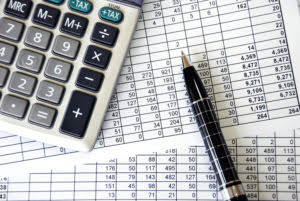Content

In addition to marginal cost, another important metric to consider is marginal revenue. Marginal revenue is the revenue or income to be gained from producing additional units. So, because the tangent line is a good approximation of the cost function, the derivative of C — called the marginal cost — is the approximate increase in cost of producing one more item. Going 1 to the right along the curving cost function itself shows you the exact increase in cost of producing one more item. The marginal cost curve shows how the cost of producing one more unit depends on the quantity that has already been produced.

Marginal cost (MC) is the additional cost of producing one more unit of a good or service. Consider the warehouse for a manufacturer of landscaping equipment. The warehouse has capacity to store 100 extra-large riding lawnmowers. The margin cost to manufacture the 98th, 99th, or 100th riding lawnmower may not vary too widely. However, manufacturing the 101st lawnmower means the company has exceeded the relevant range of its existing storage capabilities.
How to calculate marginal revenue & maximize your profits (+ formula)
Marginal cost, on the other hand, refers to the additional cost of producing another unit and informs cost pricing, but it isn’t the same thing. Marginal revenue is typically below the demand curve and is related to demand’s price elasticity— quantity demanded’s response to price changes. Therefore, a positive marginal revenue corresponds to elastic demand, while a negative marginal revenue corresponds to inelastic demand. Profit-maximizing firms focus on raising their net earnings and proving their profitability to investors.
As a result, marginal revenue may decrease past zero to become negative. The marginal cost formula is essential because it tells you if increasing production volume is a good idea. A good example of this would be marginal cost of production costing more than original production. For instance, in the hat example—if the first batch of hats cost $100 to make but the second batch cost $200 to make, the company is now in a tough spot. It has to either decide on finding a more efficient way to produce the product or raise the prices to see a profit. The bottom line is that variable cost is part of marginal cost, with the other part being fixed cost.
What Is Marginal Cost?
Thus, marginal revenue is the change in revenue divide by the change in quantity, while average revenue is total revenue divided by the number of units sold. Selling extra units of a product or service leads to higher total revenue, marginal revenue, profitability, and additional costs. Therefore, it’s essential to understand marginal revenue because it measures revenue increment from selling more products and services. We hope this has been a helpful guide to the marginal cost formula and how to calculate the incremental cost of producing more goods. For more learning, CFI offers a wide range of courses on financial analysis, as well as accounting, and financial modeling, which includes examples of the marginal cost equation in action. Businesses may experience lower costs of producing more goods if they have what are known as economies of scale.
Ultimately, you’ll need to strike a balance between production quantity and profit. Say you own a hat company and you want to see what the marginal cost will be to produce additional hats. But a growing business also comes with growing pains that can prompt questions like, “Where does the balance lie between increasing profit and overproduction? To determine the changes in quantity, the number of goods made in the first production run is deducted from the volume of output made in the following production run. Understanding the relationship between changes in quantity and changes in costs results in informed decisions when setting production targets. MC is calculated by dividing the change in what variable, by the change in Quantity of Output.
What Jobs Use the Marginal Cost Formula?
This is an important formula for cost projections and determining whether or not a business activity is profitable. Now that you’ve been introduced to the basics, there are a few nuances you should be aware of to maximize your marginal cost experience. This might be in order to get rid of stock that is going out of date, or, https://adprun.net/whats-the-difference-between-bookkeeping-and/ to attract customers to purchase cheap goods. Whilst in the store, the idea is that they would also purchase other products that offer the firm a profit. But building a second factory, to make only one more plane, won’t necessarily be profitable. On the other hand, if they build a second factory in order to produce ???
Returning to our millwork company example above, say you normally produce 240 doors per year at a cost of $24,000. However, you’ve discovered that market demand for your doors is significantly higher, and you want to produce an additional 100 doors next year. 20 Best Accounting Software for Nonprofits in 2023 In other words, the marginal cost (i.e., the additional expenditure to make another unit) is $100 per table. But be careful—relying on one strategy may only work if you have the market cornered and expect adequate sales numbers regardless of price point.